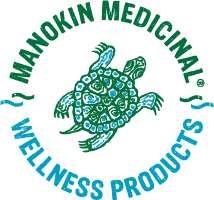
CBD found safe for Horses
Share
Changes in U.S. state laws regarding hemp (Cannabis sativa ssp. sativa) and increased use of industrial hemp distillate in tinctures and topicals have increased the necessity for research and study of the pharmacological therapies related not only to humans, but to animals as well.(1,8,9) The discovery of the components, i.e. cannabinoids, the structure and functions of the Endocannabinoid System (ECS)(1) by Israeli professor Mechoulam (Raphi) in the early 1960s is found to be a common anatomic denominator among other mammals, including, but not limited to horses, dogs, cats.(2,9)
Over 60 years of research has amassed extensive information specific to cannabinoids, i.e., CBD and THC, and their variants, CBDA, CBG, THCA, etc. that have anti-inflammatory properties reducing internal as well as external edema related to illness and/or injury.(3)(5) The consumption and/or absorption of cannabinoids, ie., cbd, cbda, cbg, cbn, thca, etc. may be administered to reduce inflammation, control pain, and encourage healing in mammals for a variety of issues, including by not limited to pain management, osteoarthritis, anxiety, gastrointestinal ailments, neoplastic/cancer, palliative care, skin conditions, endocrinopathies, etc. (6)
Historically, safe, effective bioavailability has been the driver to determine dosage of oral delivery and length of treatment. The study excerpted below verifies the bioavailability and suggested dosage ranges revealed as relevant to this study.
The following is excerpted from the Betsy Lynch’s article in The Horse as cited below:
At the 2021 Conference of American Association of Equine Practitioners, a study reported by Alicia Yocom, a veterinary resident at Colorado State University (CSU), in Fort Collins, verified CBD’s absorption within the horse’s body, referred to as pharmacokinetics (7) while gathering data pertaining to safety.(4) During the study,12 healthy mixed-breed mares were assigned to either a low- or high-dose group: The low-dose horses received 1 milligram per kilogram of body weight, while the high-dose horses received 3 milligrams per kilogram of body weight each day for six weeks. These were higher doses than most internet-sourced CBD supplement manufacturers recommended at the time of their study.
The horses were monitored daily for changes in attitude, appetite, and manure production. Every two weeks physical exams were conducted, and blood drawn monitoring any changes in health and/or blood chemistry, including liver enzyme activity. CBD levels were recorded in blood plasma at two and four weeks and collected synovial fluid again at five weeks. Conclusion of the study included a final blood sample10 days post trial to evaluate chemistry. Yocum confirmed her team found:
• CBD is bioavailable to horses when given orally.
o Physical exams and daily observations detected no visible ill effects, nor notable behavioral changes, from either group. The blood chemistry, however, revealed eight of the 12 horses experienced elevated liver enzymes which returned to normal during, or soon after, the study ended for unknown reasons.
o There was a significant drop in blood calcium (hypocalcemia) in all 12 mares, although calcium in the blood not bound to protein, also known as free calcium, remained within normal limits. The change in calcium did not pose an imminent health danger and levels returned to normal when the CBD supplement was discontinued.
• CBD plasma concentrations tend to peak four to five hours after feeding; therapeutic use might be timed accordingly.
• Recommended dosing interval is every 12 hours.
• CBD can remain in the horse’s system for 24 hours or longer as some horses evidenced 96 hours after the last dose was administered.
• CBD was consistently detectable in synovial fluid at five weeks when provided at 3 mg/kg, but not at 1 mg/kg, suggesting a cumulative and dose-dependent effect.
• CBD levels in equine plasma tended to be low compared to those measured in dogs and humans after similar dosing periods.
There is no doubt there are exciting new research and therapies evolving for our pets as well as humans as we move forward examining the relationship between this plant, its botanical relatives, and mammals on this planet.
***sources
Bibliography
1. Maccarrone M. Tribute to Professor Raphael Mechoulam, The Founder of Cannabinoid and Endocannabinoid Research. Molecules. 2022 Jan 5;27(1):323. doi: 10.3390/molecules27010323. PMID: 35011553; PMCID: PMC8746417. https://www.ncbi.nlm.nih.gov/pmc/articles/PMC8746417/#:~:text=Both%20plant%2Dderived%20THC%20and,a%20giant%20of%20modern%20science
2. Mayo Clinic Proceedings. Clinicians’ Guide to Cannabidiol and Hemp Oils. Van Dolah HJ, Bauer BA, Mauck KF. Clinicians' Guide to Cannabidiol and Hemp Oils. Mayo Clin Proc. 2019 Sep;94(9):1840-1851. doi: 10.1016/j.mayocp.2019.01.003. Epub 2019 Aug 22. PMID: 31447137. https://pubmed.ncbi.nlm.nih.gov/31447137/
3. Kogan N.M., Lavi Y., Topping L.M., Williams R.O., McCann F.E., Yekhtin Z., Feldmann M., Gallily R., Mechoulam R. Novel CBG derivatives can reduce inflammation, pain and obesity. Molecules. 2021;26:5601. doi: 10.3390/molecules26185601. https://pubmed.ncbi.nlm.nih.gov/34577072/
4. Lynch, Betsy. The Horse. Your Guide to Equine Health Care. Equine Network, LLC: CBD Study in Horses Paves the Way for New Research. 04 March 2022. https://thehorse.com/1109375/cbd-study-in-horses-paves-way-for-new-research/.
5. Verrico CD, Wesson S, Konduri V, Hofferek CJ, Vazquez-Perez J, Blair E, Dunner K Jr, Salimpour P, Decker WK, Halpert MM. A randomized, double-blind, placebo-controlled study of daily cannabidiol for the treatment of canine osteoarthritis pain. Pain. 2020 Sep 1;161(9):2191-2202. doi: 10.1097/j.pain.0000000000001896. PMID: 32345916; PMCID: PMC7584779. https://pubmed.ncbi.nlm.nih.gov/32345916/
6. Kogan L, Schoenfeld-Tacher R, Hellyer P, Rishniw M. US Veterinarians' Knowledge, Experience, and Perception Regarding the Use of Cannabidiol for Canine Medical Conditions. Front Vet Sci. 2019 Jan 10;5:338. doi: 10.3389/fvets.2018.00338. PMID: 30687726; PMCID: PMC6338022. https://www.ncbi.nlm.nih.gov/pmc/articles/PMC6338022/
7. Eichler F, Poźniak B, Machnik M, Schenk I, Wingender A, Baudisch N, Thevis M, Bäumer W, Lischer C, Ehrle A. Pharmacokinetic modelling of orally administered cannabidiol and implications for medication control in horses. Front Vet Sci. 2023 Aug 9;10:1234551. doi: 10.3389/fvets.2023.1234551. PMID: 37621871; PMCID: PMC10445762. https://pubmed.ncbi.nlm.nih.gov/37621871/
8. Marinotti O, Sarill M. Differentiating Full-Spectrum Hemp Extracts from CBD Isolates: Implications for Policy, Safety and Science. J Diet Suppl. 2020;17(5):517-526. doi: 10.1080/19390211.2020.1776806. Epub 2020 Jun 16. PMID: 32543253. https://pubmed.ncbi.nlm.nih.gov/32543253/
9. Yu CHJ, Rupasinghe HPV. Cannabidiol-based natural health products for companion animals: Recent advances in the management of anxiety, pain, and inflammation. Res Vet Sci. 2021 Nov:140:38-46. doi: 10.1016/j.rvsc.2021.08.001. Epub 2021 Aug 8. PMID: 34391060. https://pubmed.ncbi.nlm.nih.gov/34391060/
